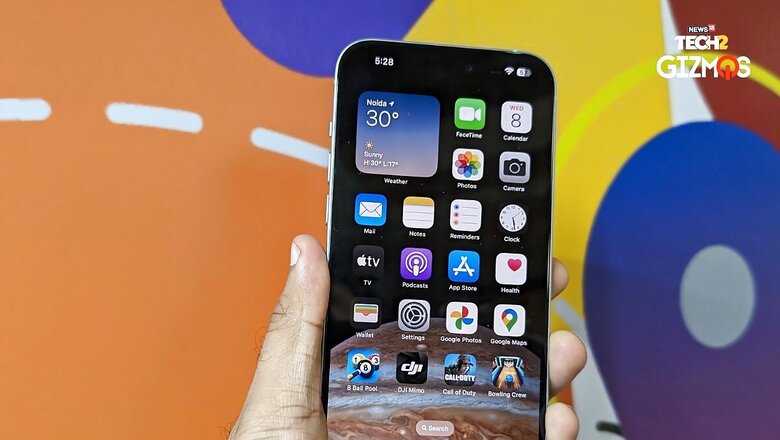
views
Smartphones have undeniably revolutionised our way of life, impacting everything from communication and information access to entertainment and body posture. But do you know that it is also changing the appearance of our hands? Recently, the term ‘iPhone finger’ has raised the eyebrows of many, raising concerns among tech enthusiasts and smartphone users. But what exactly is an “iPhone finger”? First discussed on a podcast named ‘The TJ Show,’ the term refers to a visible mark or indentation on the little finger, likely caused by overuse of smartphones.
“The TJ Show” delved into the phenomenon of the iPhone finger, with the host explaining, “The way we hold our phones sometimes is with the weight of the phone resting on your pinky finger. It creates an indentation that actually changes the way your little finger looks.”
Curious to know if you possess this curious trait or not? Conduct a simple examination. Hold out both pinkies and compare them. If a noticeable difference is observed from the other, particularly a significant indent on the dominant hand, likely from smartphone usage, then the diagnosis of “iPhone finger” is confirmed.
While tech enthusiasts have observed this phenomenon and believed that the constant gripping of a phone can cause the pinky finger to develop a small indentation, health experts have busted the bubble and dismissed this situation as a genuine medical condition.
Giving insights into the phenomenon and the existence of finger indents, an occupational therapist, Andrew Bracken, said during a conversation with Fox13 that “iPhone finger” is not recognised as a medical condition and is not an official medical diagnosis. Individuals use their pinky to stabilise and support their smartphone, and holding the phone causes an indentation on the side of their pinky.
Bracken further explained the outlet and warned smartphone users against the potential consequences of overusing smartphones, including cubital tunnel syndrome, carpal tunnel syndrome, and trigger finger. “They will develop numbness in their pinky finger and along the side of their hand. It’s the angle of their wrist and their elbow that contributes to that numbness, and that can lead to some real serious consequences if not addressed,” Bracken told the outlet.
Moreover, Dr. Peter Evans, an orthopaedic surgeon with Cleveland Clinic, emphasised that there is no indication that smartphone use contributes to the latter. But he also warned about a few phone-related medical conditions that may arise.
Dr. Evans warned that it is also possible that people who think they have smartphone pinky could have an underlying condition. Constant cellphone use can cause many joint problems. While some claims of phone-related injury might be overstated, others are real and involve long-term, serious damage, reported the New York Post.
“Some of these medical problems include clinodactyly, a genetic finger malformation causing the tip of the pinky to bend close to the ring finger. There is also Dupuytren’s contracture, which happens when thick cords form beneath the skin over years and yank fingers close to the palm,” he added.
While Dr. Evans cleared the air about the iPhone finger, he explained that ‘smartphone elbow,’ medically known as cubital tunnel syndrome, is quite real. This happens to people who bend their elbows beyond 90 degrees, commonly to text for long durations.
“Tingling or numbness in your pinky could also signal the condition known to cause nerve damage,” Evans concluded.




















Comments
0 comment